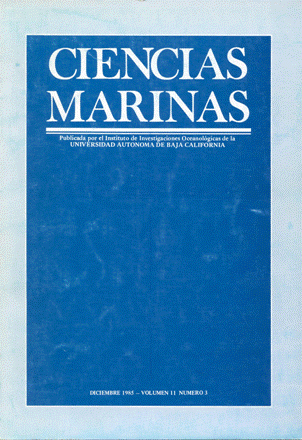Pesticides in coastal waters of the Gulf of California: Mussel watch program 1987-1988
Main Article Content
Abstract
A monitoring program was carried out in 1987 and 1988 using the mussel Modiolus capax as bioindicator to establish the contamination by organochlorine and organophosphate insecticides along the western coast of the Gulf of California. The results show that p,p′-DDE (5.78-105.3 ng g–1 dry weight) is the most bioavailable organochlorine toxic substance found in waters of the Gulf of California. The highest levels of this metabolite of the DDT insecticide were detected at the sites of Bahia de los Ángeles, San Rafael and San Francisquito, located in the central Gulf. The geographical distribution of p,p′-DDE was similar in 1987 and 1988. The results do not show a definite trend with regard to the temporal pattern of the contamination by pesticides. Heptachlorepoxide was detected in 18% and endrin in 8% of all the samples collected. Dieldrin, cis-chlordane, dacthal and endosulfan I were detected in less than 5% of the samples. The higher concentrations recorded in the central Gulf may originate in the agricultural valleys of Sonora and Sinaloa. The concentrations of pesticides detected in M. capax during the two years of the study were below the international limits established for the protection of aquatic biota.
Downloads
Article Details
This is an open access article distributed under a Creative Commons Attribution 4.0 License, which allows you to share and adapt the work, as long as you give appropriate credit to the original author(s) and the source, provide a link to the Creative Commons license, and indicate if changes were made. Figures, tables and other elements in the article are included in the article’s CC BY 4.0 license, unless otherwise indicated. The journal title is protected by copyrights and not subject to this license. Full license deed can be viewed here.

